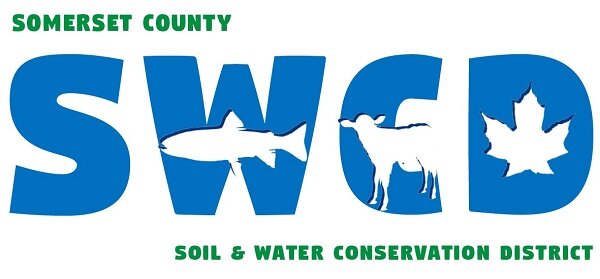Refurbishing Fields for Wildlife: Considerations Before You Begin
Are you interested in improving your old run-down field for wildlife habitat? Native grasslands provide habitat for a multitude of birds, native pollinators and other wildlife. Restoration of your run-down field will benefit a host of species experiencing population declines and provide you the opportunity to observe and enjoy a greater variety of migratory songbirds, raptors, small mammals, pollinators and more.
Below are some suggestions on how to go about this. Note that the details of each step are specific to the condition of and goals for your field. So, the best first step may be to contact Somerset County Soil & Water Conservation District (SCSWCD), where our staff is available to help you through this process.
First, identify your habitat goals – target desired species for habitat creation (i.e. pollinators, grassland birds, general wildlife, etc.)
Next – inventory what you have:
Assess the soils/aspect of your field – e.g. are there low-lying wet areas, is the field sandy and dry? Are there surface rocks or other roughness (such as deep ruts) that will make equipment operation a challenge?
Take a soils test – you can obtain a soil test box and form at the SWSWCD office in Skowhegan and send the test to the University of Maine Soil Testing Lab (https://umaine.edu/soiltestinglab/). District personnel are available to assist with this procedure.
Do a site walk (with a resource professional if you don’t feel qualified; District staff are available for Somerset County site walks): Identify plant species currently growing in your field.
Check for invasive plant species. You may need a separate but compatible plan to deal with these if you have a large number. Contact the District office for more information. In 2020, SCSWCD is able to work with eligible landowners to develop invasive species action plans to help control these nonnative plants. Contact us to see if your property qualifies for development of a plan at no cost to you.
Note other resources adjacent or available – e.g. is there a stream, pond or wet run? Do you have flowering/berry-bearing plants in your hedge rows?
Note current wildlife use of the field.
Inventory equipment to which you have access that can help with field improvements – e.g. tractor, manure spreader, seeding equipment.
What is the current management regime for keeping the field open?
Once you have completed your inventory and gathered all of your data, the next step is to make some decisions based on your priorities and your environmental and financial resources. Your plan should address the following -
Does the field need lime? That is the best place to start. Fertilizer won’t be as effective if you put it on when the soil pH is not in the optimal range for grass and forb production. There are different types of lime – talk with a resource professional (University of Maine Cooperative Extension Agents, SCSWCD personnel, local Certified Crop Advisors (CCAs), etc.) about what will best meet your needs and budget.
Given the fertilizer needs for your field, decide what type of fertilizer you want to use – organic sources such as hen or other types of manure or commercial blends. Use a resource professional to help you figure out the best option and rate of fertilizer application, given the soil test recommendations.
If you have invasive species, make certain that your treatment options are compatible with your habitat goals.
Does the field need to be reseeded? – Again, enlist the help of a resource professional to decide if the whole field may need to be reseeded or just spot areas and to help choose the best seeding method (e.g. no-till drilling, frost seeding, tillage).
When and how often do you need to mow the field to meet habitat goals? For example, if you are managing for grassland bird habitat, the fields would need to be mowed at least once a year. If forage production is also desirable, depending on soil type and weather, you may be able to mow the field early (May) and then again in mid-July to help encourage grass production over woody-stemmed species.
Finally, develop a timeline for your field improvement plans. Your timeline for doing improvements will be driven by your budget and the optimal time of year for each step. Lime, fertilizer and seed are not inexpensive. Take a realistic look at your budget and make plans accordingly. Most of your activities will need to take place during the growing season.
You will first need to deal with any conditions that will interfere with the use of field equipment – e.g. smoothing ruts or removing large rocks.
Lime applications, again, should generally be made before fertilizer. Fertilizer is best applied either in the early spring (before birds and other wildlife are inhabiting the area) or after the field is cut. Fall applications generally work with habitat goals, but are not a good practice for water quality, especially if your field is near a surface water source or is steeply sloping. Furthermore, nitrogen applied in the fall will be mostly lost before spring growth.
Timing of seeding, if it is needed, will depend somewhat on the type of seeding you have chosen and the equipment that you have.
With a good plan in place, you can improve your field habitat significantly within 2-5 years. Good quality grassland habitat that is stable through the nesting season is a scarce commodity these days, and your efforts will be truly beneficial, providing food and cover for a number of species truly in need of the help.
- Laura Suomi-Lecker, Somerset County SWCD Technical Director
jbrockway 2020


